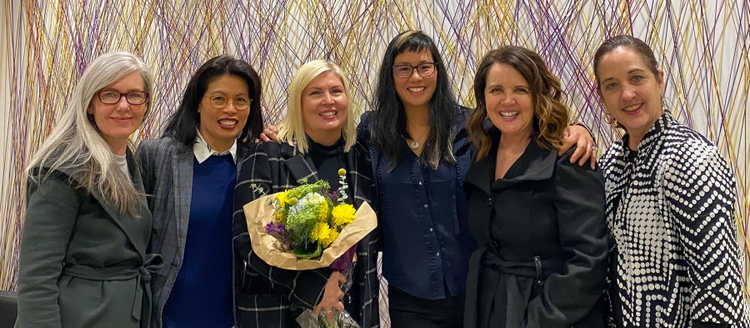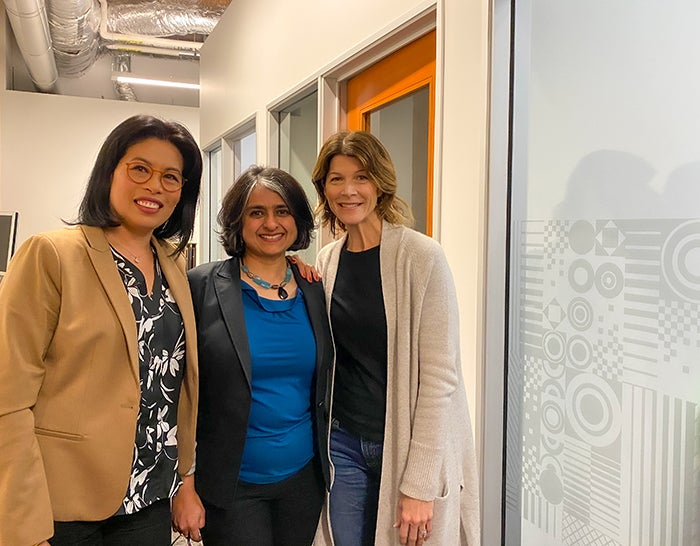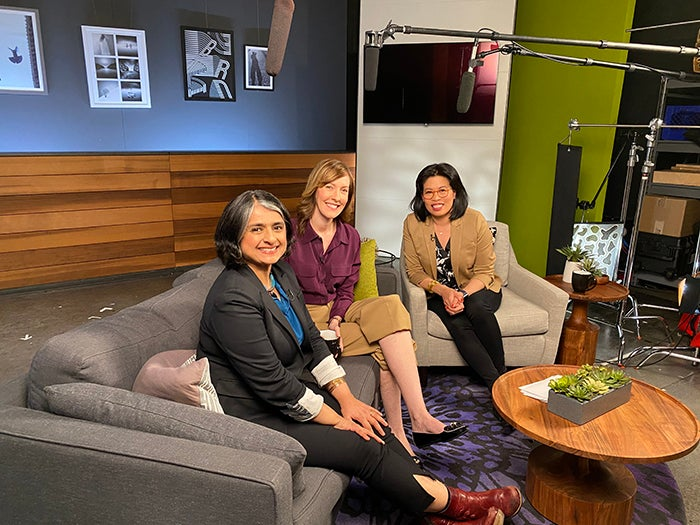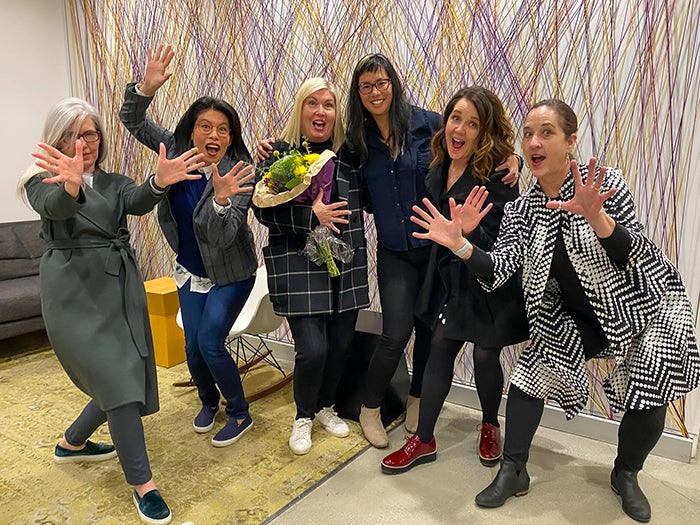Creating more space at the table for women

Photo from Leadership Circles graduation: (L-R) Jamie Myrold (VP, Design), Me, Katy Montanez (Group Engineering Program Manager, Digital Imaging), Zorana Gee (Director of Product Management, Creative Cloud), Melissa Monroe (Director of Program Management, Digital Imaging), Jackie Lincoln-Owyang (Sr. Engineering Manager, Photoshop)
“What’s the worst thing that could happen?”
This was my father’s advice to me more than 30 years ago. It is a question that I’ve turned to throughout my career and one that has shaped my view on life. As I think of where my career has taken me, I’ve had my fair share of moments of doubt – moments when I’d call my dad to ask him for advice. Whether it was deciding to start my own design company, teaching a computer graphics class at the American University or deciding to move to California to take a job at Adobe, my dad was always able to turn what I considered complicated decisions into pretty simple ones by asking me a few simple questions:
- What do you need?
- Can you take care of yourself?
- What’s the worst thing that could happen?
I’ve made a lot of decisions in my life. And you know what? The worst thing that could happen never did. I had a successful design firm. I taught a university course that my students loved. I took the job at Adobe and here I am 22 years later leading the engineering and product teams responsible for one of the most iconic products.

(L-R): Me, Mala Sharma (VP & GM, Creative Cloud Product Marketing & Community); Ashley Still (SVP, Digital Media).
My dad’s question became my motto and I now focus less on the fear of failing and more on the possibilities of trying. Over the years I’ve gotten very comfortable with trying – because now the worst thing that could happen has transformed from failing to not trying at all.
I am a woman. I am a US immigrant from Jamaica. I am an introvert. I am a designer who doesn’t know how to code.
These would all seem to many people like reasons enough to shy away from trying. Maybe there would have been a moment in my youth when I would have found any excuse to give up, but now the question I ask myself has changed from “Why do I think I can do this?” to “Why wouldn’t I?”
Why wouldn’t I lead the Photoshop product engineering team? Why wouldn’t I have a seat at the table?
As a woman and a leader in tech, I cannot stress enough how important this last question is – why wouldn’t we, as women, have a seat at a table that has historically always been filled primarily with men?
Before we all had to start working from home, I had the pleasure of having a very open and honest conversation with my colleagues Janet Boss and Mala Sharma as part of the Adobe Women Executive Leadership series to discuss this very topic of “having a seat at the table.” Not only does this mean having a physical seat at the table (or as is the case right now, being part of the virtual call), but also sharing your point of view on whatever is being discussed.
As Janet pointed out, “If you think about your role when you go into a meeting – why be in the meeting if you’re not going to have a point of view and if you’re not going to share that point of view?”
For me, it’s always been really important for everyone to have a physical seat at the table (or the virtual meeting), but I’ve realized that is not always enough. As leaders, it’s up to us to draw attention to the person who we know has a point of view to share but is too quiet to speak up. When there is a decision to be made, I always try to go around the room to make sure I get to hear everyone’s perspective. And more often than not, when I get to one of the women in the meeting, they will look at me questioning if I actually want to hear from them. The answer is always – yes.
Beyond sharing your perspective, another key to exercising your seat at the table is realizing what your strengths are. Interestingly, Janet, Mala and I are all introverts – this, Mala said, is our “superpower.” As introverts, we tend to be very good listeners, take time for reflection and connect best with people in 1:1 or small group settings. While we don’t shy away from public speaking and can lead larger group meetings, we are also good at looking at problems in different ways and can be empathetic to members on our teams.

Behind the Scenes! (L-R): Mala Sharma (VP & GM, Creative Cloud Product Marketing and Community), Janet Boss (Senior Director, Worldwide GTM Operations), Me.
I am grateful for the Adobe & Women Employee Network and the Women Executive Leadership series because these are important conversations that need to be had. Whether it’s how to navigate your career, building influence or speaking up in a meeting, I think we would be remiss as leaders to not share our wisdom with the rest of the women that work at Adobe, and in tech overall. It’s programs and efforts like these that have also led to Adobe being named as one of Forbes’ Best Employers for Women. Adobe is a company where I feel comfortable sharing my perspective, and where I feel fully supported by my peers to become the best version of myself.

Another photo from Leadership Circles graduation: (L-R) Jamie Myrold (VP, Design), Me, Katy Montanez (Group Engineering Program Manager, Digital Imaging), Zorana Gee (Director of Product Management, Creative Cloud), Melissa Monroe (Director of Program Management, Digital Imaging), Jackie Lincoln-Owyang (Sr. Engineering Manager, Photoshop).
As a way to pay it forward, and to continue making Adobe a great place to work for women, I am committing to making myself accessible on a regular basis to the women in my organization to help with career advice, life advice or just to talk. I want to work to make executive leadership attainable to all women.
I want all women to think “why wouldn’t I have a seat at the table?”
At Adobe, we believe that everyone deserves respect and equal treatment, and we also stand with the Black community against hate, intolerance and racism. We will continue to support, elevate, and amplify diverse voices through our community of employees, creatives, customers and partners. We believe Adobe has a responsibility to drive change and ensure that every individual feels a sense of belonging and inclusion. We must stand up and speak out against racial inequality and injustice. Read more about the actions we’re taking to make lasting change inside and outside of our company.
We also know many people are still impacted by the current COVID-19 crisis and our thoughts are with you. The entire Adobe team wants to thank you, our customers, and all creators around the world for the work you do to keep us inspired during this difficult time.